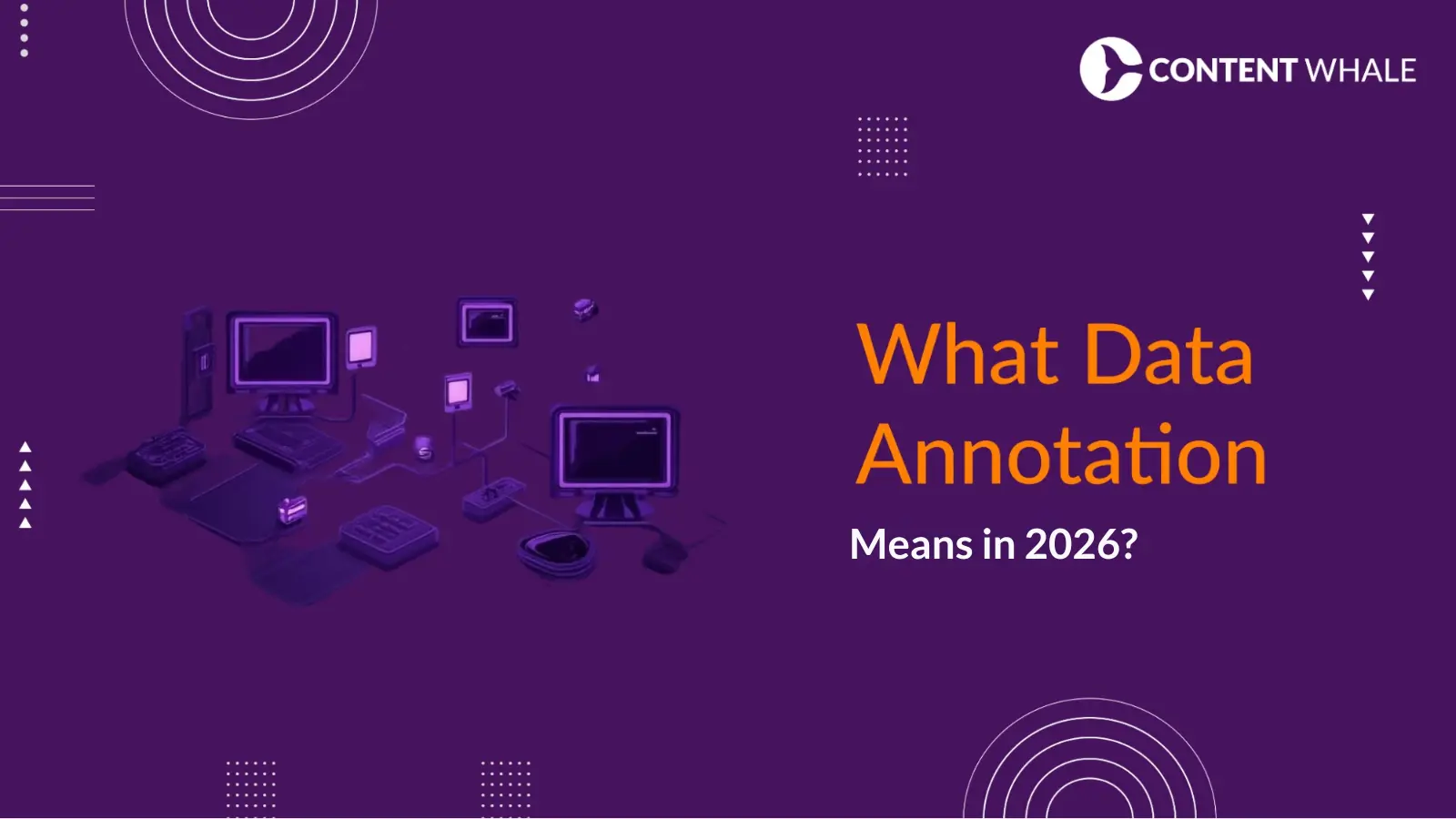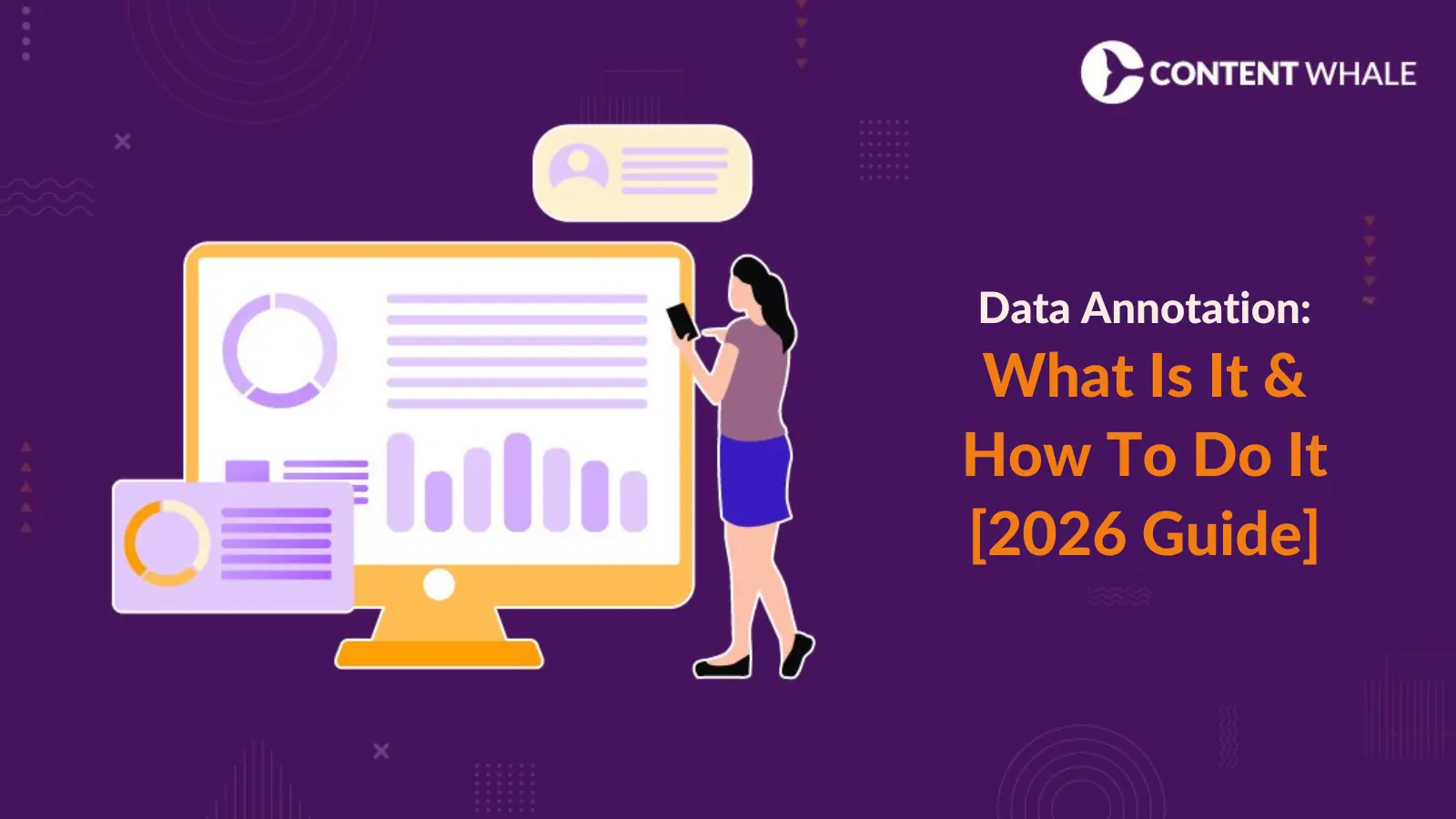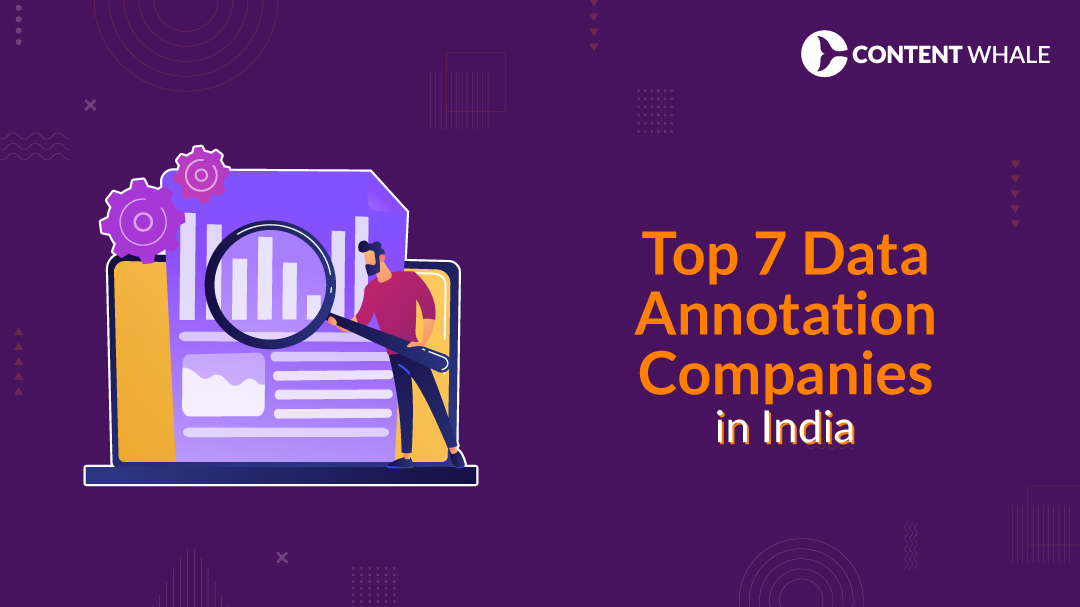What does data annotation mean today, and why is it critical to building reliable AI systems? Many teams assume that a large dataset and powerful GPUs are enough to train accurate models. But without structured, labeled data, that setup won’t deliver real results.
Data annotation means assigning meaning to raw inputs like text, images, or audio so models can learn from them. Poor labels lead to poor predictions.
Manual input still plays a big role, even with automation. This is where the real data annotator meaning becomes clear. These professionals resolve ambiguity, catch edge cases, and improve data quality.
At Content Whale, our data annotation services help AI teams produce clean, reliable datasets across vision, NLP, and audio tasks. This blog explains what data annotation means in 2025 and why it still defines model success.
What Data Annotation Means Now
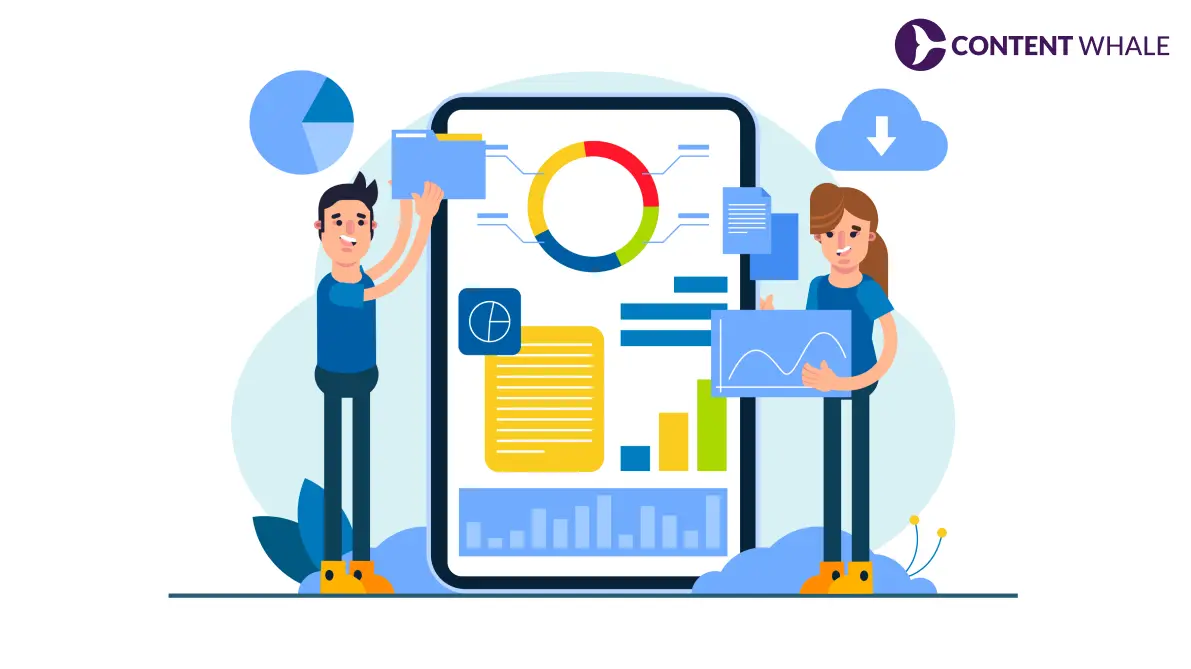
Data annotation means giving structure to raw data so that machine learning models can interpret it correctly. Whether it’s an image, a sentence, or an audio clip, data annotation means assigning labels that guide the learning process. Without accurate annotation, models fail to identify patterns or make reliable predictions.
Today’s workflows cover various formats:
- Labeling images with bounding boxes or segmentation
- Tagging text for sentiment, topics, or named entities
- Transcribing and labeling audio clips
- Tracking video frames for object detection
- Structuring 3D point clouds for LiDAR processing
The data annotator meaning is often misunderstood. Annotators do more than click. They follow detailed rules, manage complex inputs, and ensure quality. Their work decides if a model learns correctly or fails.
That’s why understanding the different types of annotation is the next step. Each use case demands a specific approach.
Types of Data Annotation in 2026

Data annotation means using the right technique to add meaning to different data types. Each annotation type serves a specific purpose in preparing accurate datasets. Here’s a breakdown:
1. Image annotation
This includes bounding boxes, segmentation, and keypoint landmarks. It’s used to locate and identify objects in visual data.
Example: Drawing bounding boxes around cars in street images for vehicle detection.
2. Text annotation
Involves sentiment tagging, named entity recognition (NER), and intent classification. It’s widely used for chatbot training, search, and document processing.
Example: Tagging the phrase “need to reschedule” with intent = appointment change and sentiment = neutral.
3. Audio annotation
Covers transcription, speaker labeling, and acoustic tagging. Useful for speech recognition and voice-based applications.
Example: Labeling sections of a recorded meeting with different speaker names and background noise types.
4. Video annotation
Includes object tracking across frames and labeling human activities. Common in action recognition and surveillance systems.
Example: Tracking a moving vehicle across camera frames to train behavior prediction models.
5. 3D/LiDAR annotation
Involves segmenting point clouds and marking spatial depth. Often used in robotics and autonomous navigation.
Example: Labeling road signs and lane markings in LiDAR scans for real-time driving assistance.
The data annotator meaning shifts slightly across formats—some tasks require visual precision, others need contextual understanding. But in all cases, quality annotation sets the base for model success.
Let me know when to move to the next section: How Annotated Data Feeds AI Model Training.
How Annotated Data Feeds AI Model Training
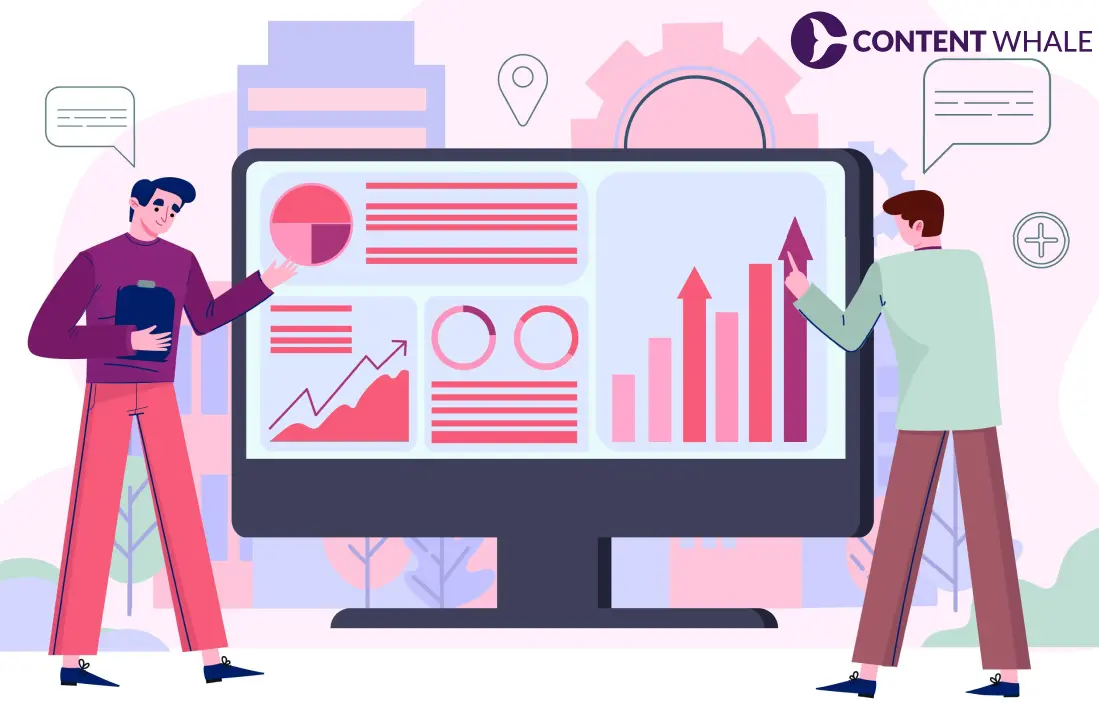
To understand how training works, start with the annotating data definition—it’s the process of labeling raw input so that machines can learn from examples.
In supervised learning, models rely on these labels to match inputs with correct outputs. Data annotation means transforming unstructured data into a format the model can trust.
When data isn’t labeled consistently, the model learns incorrect patterns. Structured input helps:
- Reduce learning errors early in training
- Improve generalization on unseen data
- Maintain consistent feature-to-label alignment
- Build trust in the output predictions
The data annotator meaning becomes more impactful here. Annotators aren’t just labeling—they’re teaching the model how to see and decide.
Human-in-the-Loop Annotation
Human-in-the-loop annotation brings reviewers into the loop during model development. It’s critical for:
- Fixing automation errors in edge cases
- Flagging biased or unsafe content
- Maintaining ethical standards in generative AI
This approach improves quality while keeping automation scalable.
That’s why clean, structured annotation guided by both tools and human reviewers is the backbone of every reliable AI training pipeline.
Choosing Between In-House vs Outsourced Annotation
Understanding the data annotation meaning helps clarify why teams consider whether to manage labeling internally or rely on external providers. Data annotation means converting raw input into labeled formats a model can learn from. The decision affects quality, speed, and control.
Use in-house annotation when:
- You are working with private or sensitive data
- Domain-specific knowledge is needed
- Your team requires control over tools and workflows
Use outsourced annotation when:
- The project includes large volumes of data
- You need fast turnaround
- Your internal team is focused on other priorities
The data annotator meaning depends on who is doing the work. Internal annotators may understand the product better. External providers often follow established processes and scale faster.
Clear annotating data definition, documented instructions, and ongoing reviews make either option effective. High-quality labeling improves training and supports consistent outputs.
Latest Trends in Data Annotation for 2026

The data annotation meaning continues to expand in 2026 as teams look for faster, more scalable ways to prepare training data. While data annotation means labeling input for machines, the process now includes tools, automation, and review workflows that didn’t exist a few years ago.
Here are key trends shaping annotation today:
- AI-assisted labeling: Tools can pre-label data, reducing manual effort while humans correct and approve it
- Real-time annotation pipelines: Used in systems that require constant model updates, such as fraud detection or autonomous navigation
- Privacy-first datasets: Teams use obfuscation techniques to protect identities during annotation
- Multimodal annotation: Combining text, image, and audio in a single task to support more complex models
The data annotator meaning has evolved. Annotators now work with AI, manage quality pipelines, and specialize by task type.
These trends are changing how teams define the meaning of data annotation, placing greater value on speed, ethics, and hybrid workflows.
Conclusion

Data annotation means preparing structured data your model can learn from. But most teams struggle with unclear definitions, inconsistent labels, and untrained annotators. The consequences? Failed models, biased outputs, and wasted budgets.
The data annotation meaning today goes beyond tagging—it decides how well your AI performs.
Content Whale solves this with expert-led data annotation services built for quality, scale, and speed. From image to text and audio, we help you train clean, production-ready datasets that actually work.
People also asked
1. What is data annotation and why does it matter?
Data annotation means labeling raw inputs like text, images, or audio to make them understandable for machine learning. The data annotation meaning lies in enabling models to learn patterns accurately. It’s essential for NLP, computer vision, and speech models that depend on labeled datasets to perform correctly.
2. How much data do I need before starting annotation?
Start with a high-quality sample. The meaning of data annotation is tied to consistency, not volume. A small, well-annotated dataset trains better than a large noisy one. Once baseline performance is solid, expand gradually to cover all use cases in your annotated dataset.
3. How do I ensure my annotated dataset is representative of production data?
A reliable annotated dataset reflects real-world conditions. Use diverse data sources, test environments, and involve domain experts. This approach aligns the annotation in machine learning process with production scenarios, improving model generalization and reducing bias in unseen data.
4. What are the best practices to avoid bias in annotated data?
To reduce bias, define a clear annotating data definition, train annotators on edge cases, and regularly audit labels. Include diverse sample sets and viewpoints. This ensures your data labeling explanation supports fair and accurate model outcomes in all environments.
5. Which part of my dataset should I annotate first?
Focus first on the most common or business-critical use cases. Data annotation means prioritizing clarity where it impacts model accuracy the most. Early high-impact labels help the system learn essential patterns faster, improving performance in early deployment stages.
6. How do I handle edge cases during annotation?
Flag and isolate edge cases early. Update your data annotator meaning and guidelines to address them. In annotation in machine learning, handling rare inputs correctly improves prediction stability and protects models from failure in real-world usage.
7. What tools are commonly used for annotation and quality assurance?
Popular platforms like Labelbox and SuperAnnotate help define the annotating data definition, enforce consistency, and track quality. Tools support human-in-the-loop workflows, auto-labeling, and structured review pipelines—key to producing a reliable annotated dataset for training.
8. What qualifies someone to be a good data annotator?
The data annotator meaning involves more than clicking tags. A good annotator understands context, follows complex instructions, and identifies ambiguity. These skills ensure the data annotation meaning translates into clean, useful training data for any AI application.
